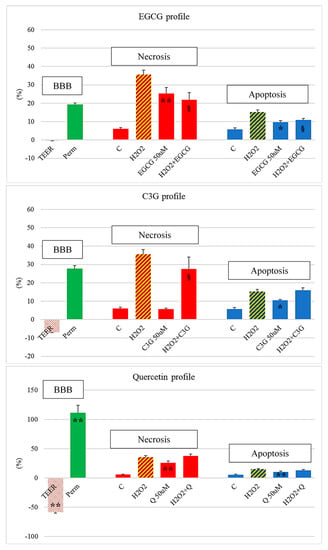You can't do anything with this until your doctor has a protocol and gives you a prescription for that protocol.
Polyphenols from Food and Natural Products: Neuroprotection and Safety
1
Research Institute for Medicines
(iMed.ULisboa) and Department of Biochemistry and Human Biology (DBBH),
Faculty of Pharmacy, Universidade de Lisboa, 1649-003 Lisbon, Portugal
2
Department of Food Science and Technology, Biotechnical Faculty, University of Ljubljana, SI-1000 Ljubljana, Slovenia
*
Author to whom correspondence should be addressed.
Antioxidants 2020, 9(1), 61; https://doi.org/10.3390/antiox9010061
Received: 6 December 2019 / Revised: 31 December 2019 / Accepted: 7 January 2020 / Published: 10 January 2020
(This article belongs to the Special Issue Botanical Antioxidants and Neurological Diseases)
Polyphenols are naturally occurring micronutrients that are present in
many food sources. Besides being potent antioxidants, these molecules
may also possess anti-inflammatory properties. Many studies have
highlighted their potential role in the prevention and treatment of
various pathological conditions connected to oxidative stress and
inflammation (e.g., cancer, and cardiovascular and neurodegenerative
disorders). Neurodegenerative diseases are globally one of the main
causes of death and represent an enormous burden in terms of human
suffering, social distress, and economic costs. Recent data expanded on
the initial antioxidant-based mechanism of polyphenols’ action by
showing that they are also able to modulate several cell-signaling
pathways and mediators. The proposed benefits of polyphenols, either as
protective/prophylactic substances or as therapeutic molecules, may be
achieved by the consumption of a natural polyphenol-enriched diet, by
their use as food supplements, or with formulations as pharmaceutical
drugs/nutraceuticals. It has also been proved that the health effects of
polyphenols depend on the consumed amount and their bioavailability.
However, their overconsumption may raise safety concerns due to the
accumulation of high levels of these molecules in the organism,
particularly if we consider the loose regulatory legislation regarding
the commercialization and use of food supplements. This review addresses
the main beneficial effects of food polyphenols, and focuses on
neuroprotection and the safety issues related to overconsumption.
View Full-Text
▼
Show Figures
This is an open access article distributed under the Creative Commons Attribution License which permits unrestricted use, distribution, and reproduction in any medium, provided the original work is properly cited



No comments:
Post a Comment